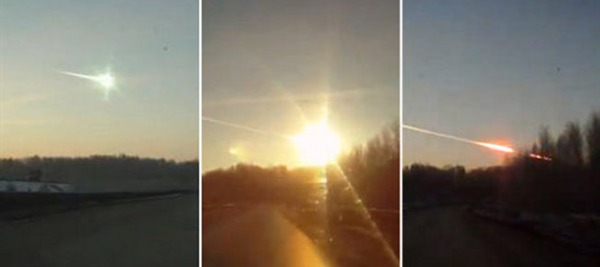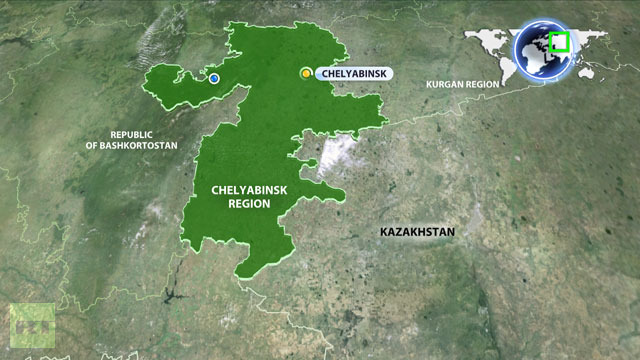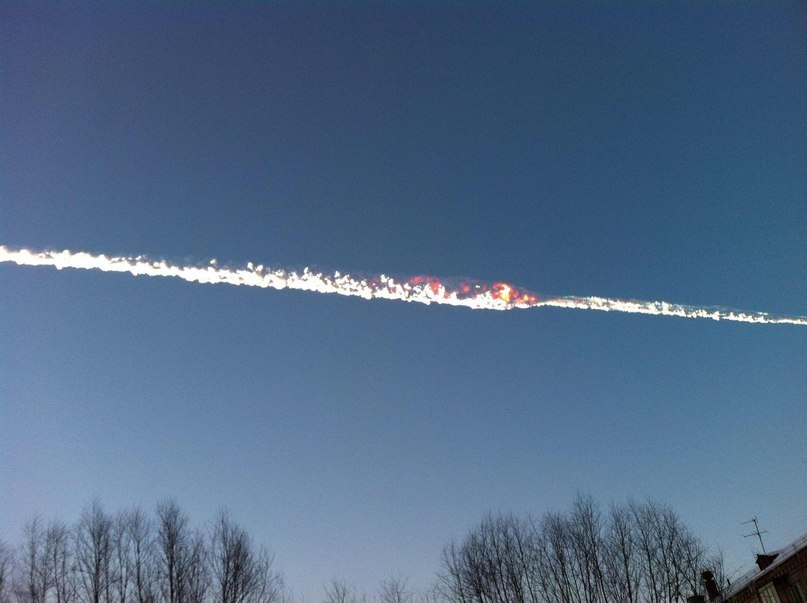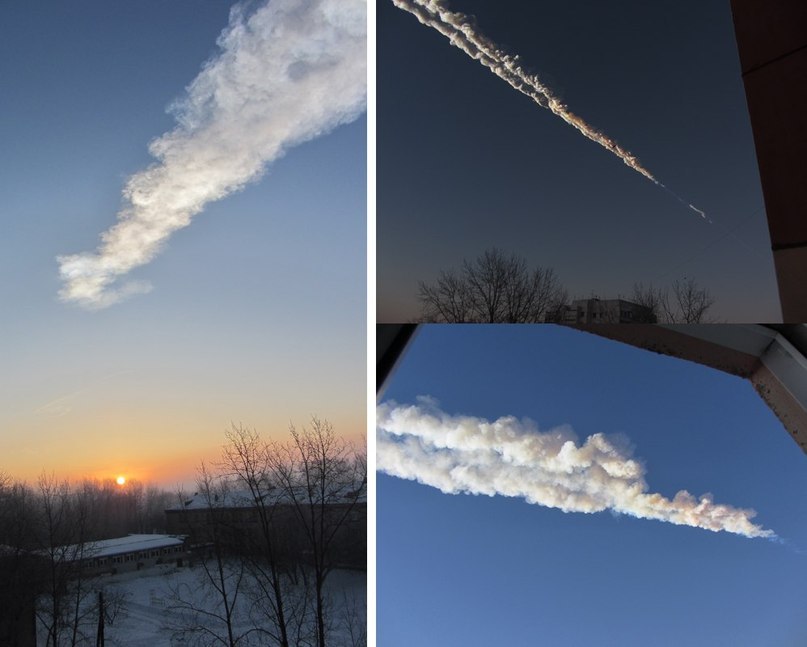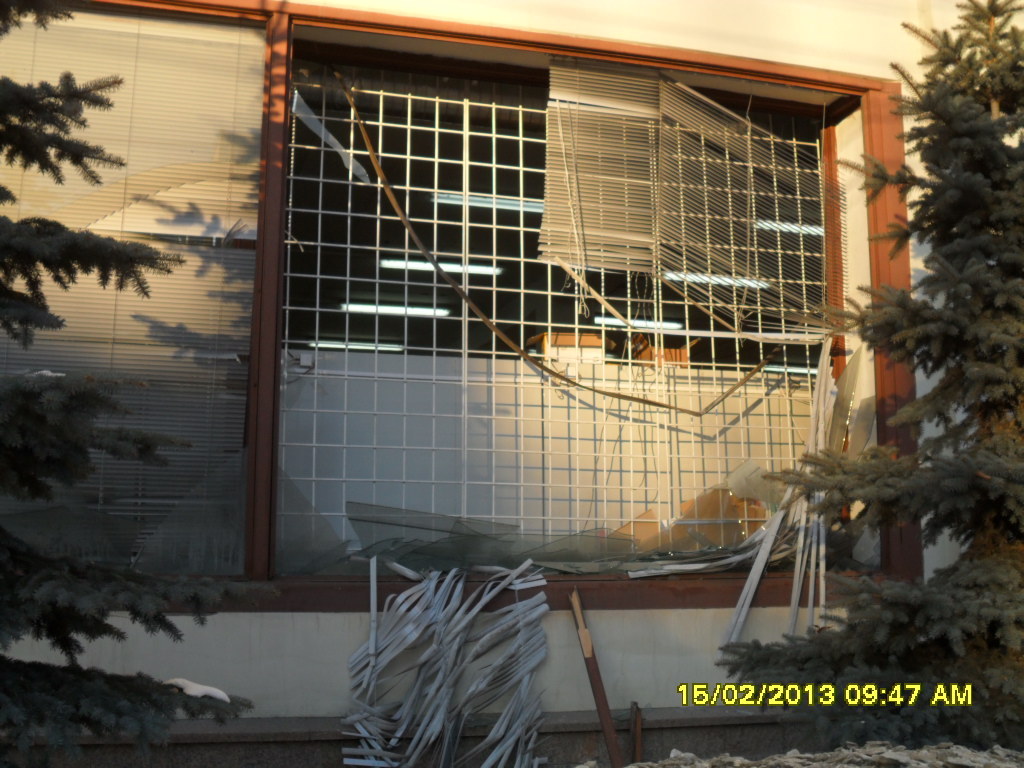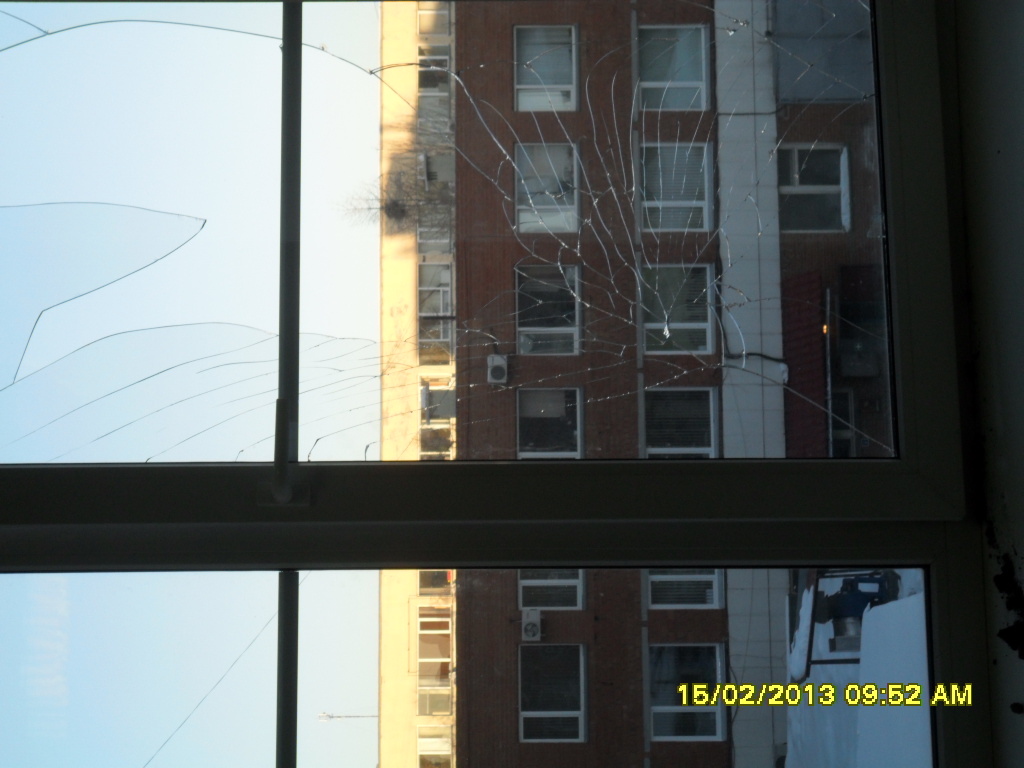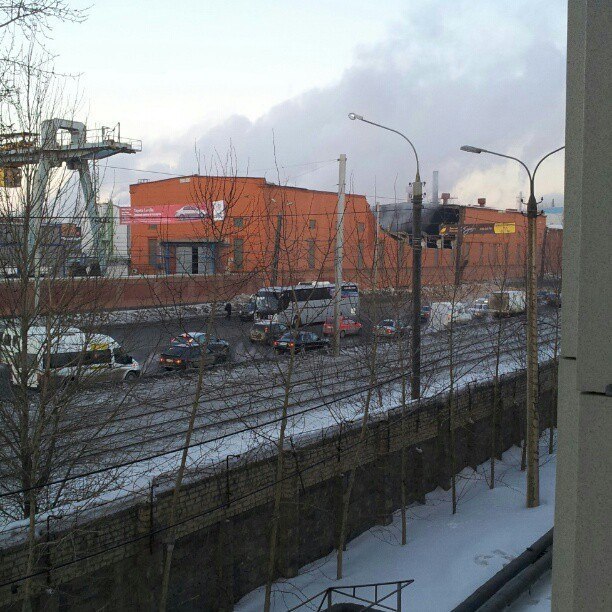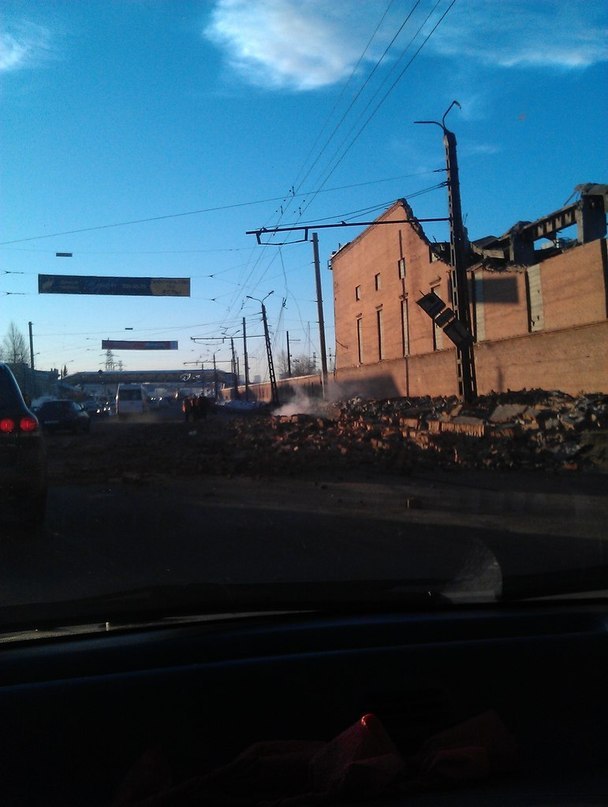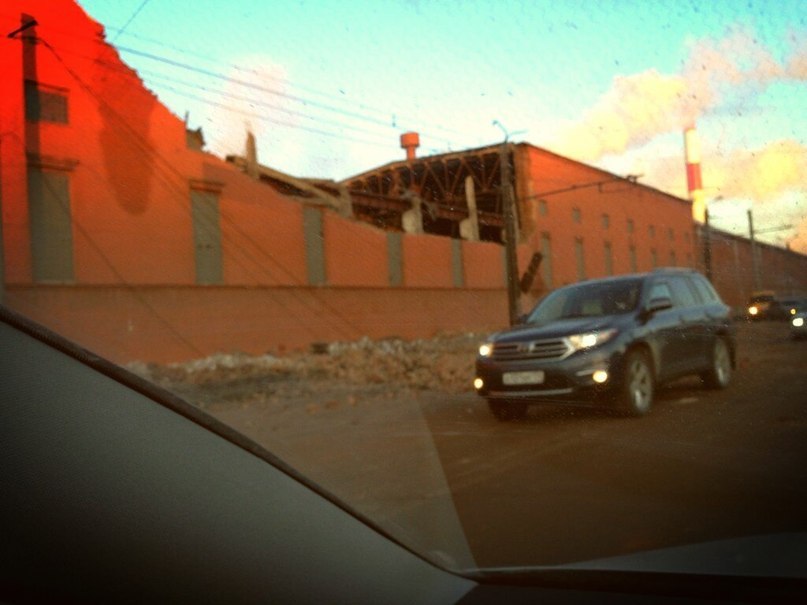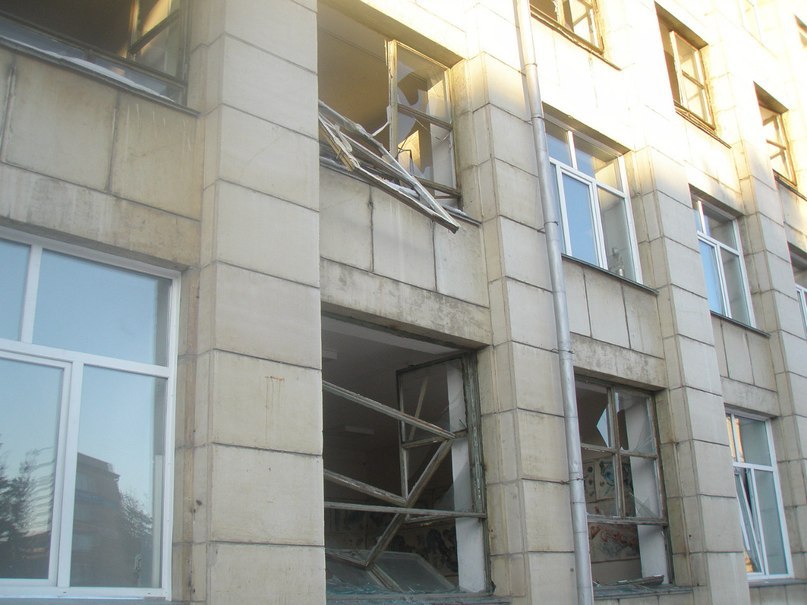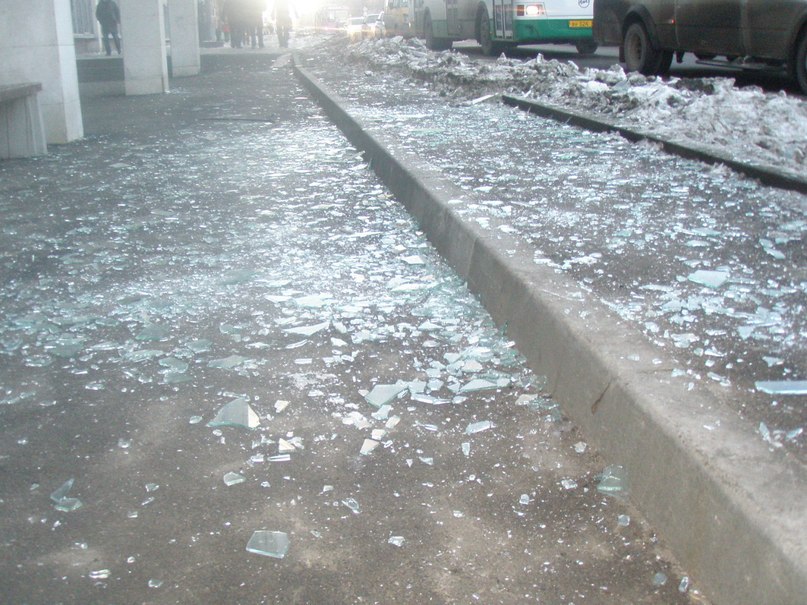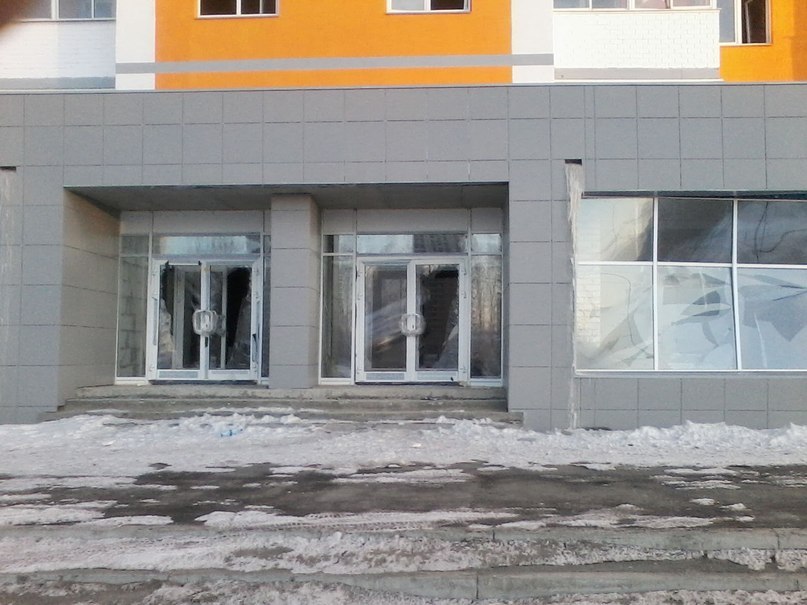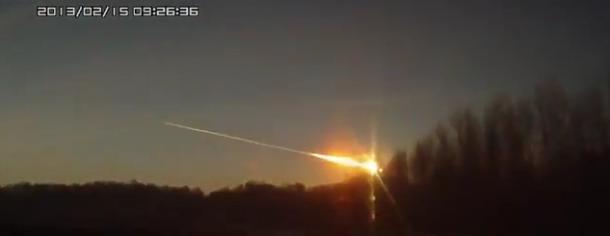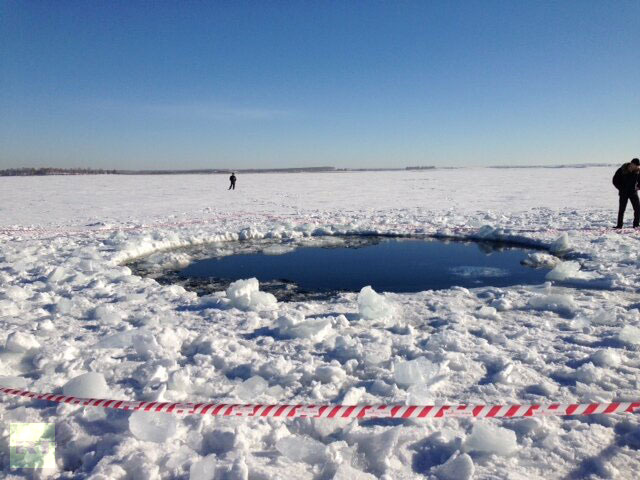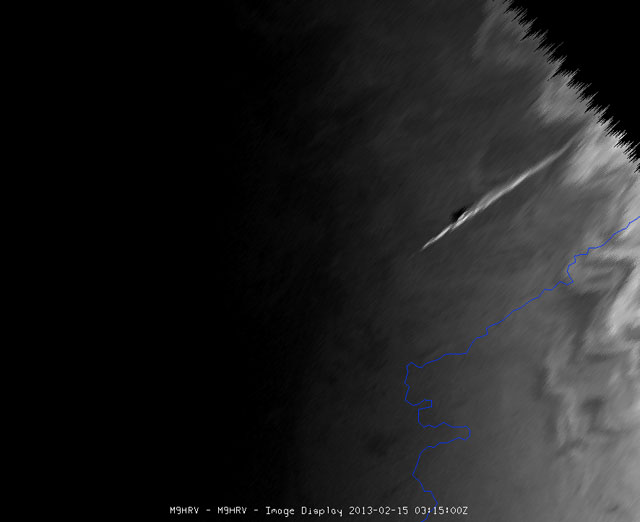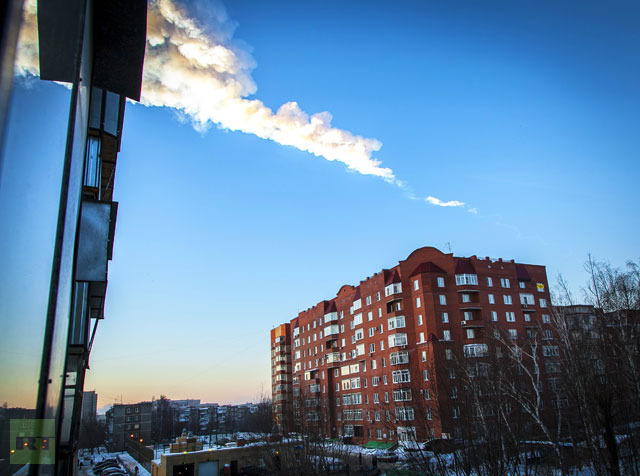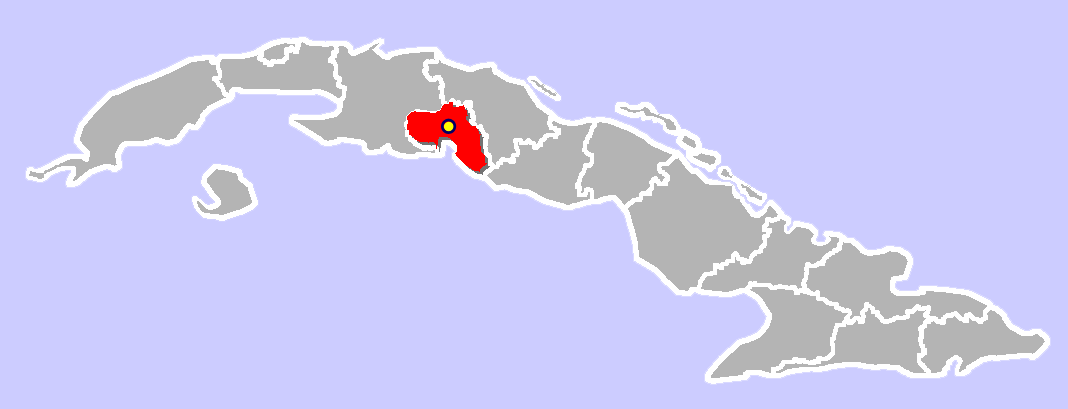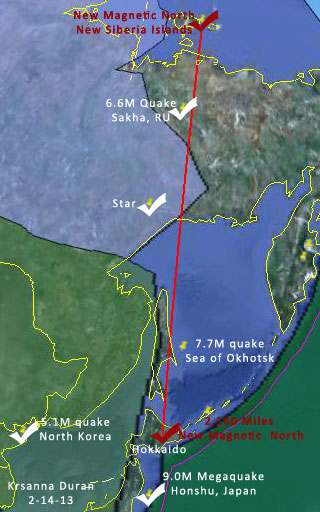Meteorite shook Chelyabinsk this morning.
Shook my whole building and woke me up! #челябинск http://www.youtube.com/watch?v=4ZxXYscmgRg&feature=youtu.be …
Police in the Chelyabinsk region are reportedly on high alert, and have
begun ‘Operation Fortress’ in order to protect vital infrastructure.
Office buildings in downtown Chelyabinsk have been evacuated. An emergency message published on the website of the Chelyabinsk regional authority urged residents to pick up their children from school and remain at home if possible.
Those in Chelyabinsk who had their windows smashed are scrambling to cover the openings with anything available – the temperature in the city is currently -6°C.
Chelyabinsk regional governor Mikhail Yurevich said that preserving the city’s central heating system is authorities’ primary goal.
“Do not panic, this is an ordinary situation we can manage in a
couple of days,” the governor said in and address to city residents.
Background radiation levels in Chelyabinsk remain unchanged, the Emergency Ministry reported
Many locals reported that the explosion rattled their houses and smashed windows. “This explosion, my ears popped, windows were smashed… phone doesn’t work,” Evgeniya Gabun wrote on Twitter.
“My window smashed, I am all shaking! Everybody says that a plane crashed,” Twitter user Katya Grechannikova reported.
“My windows were not smashed, but I first thought that my house is being dismantled, then I thought it was a UFO, and my eventual thought was an earthquake,” Bukreeva Olga wrote on Twitter.
The Mayak nuclear complex near the town of Ozersk was not affected by the
incident, according to reports. Mayak, one of the world’s biggest nuclear
facilities that used to house plutonium production reactors and a
reprocessing plant, is located 72 kilometers northwest of Chelyabinsk.
NASA scientists said that the incident is not connected to the approach of 2012 DA14, which measures 45 to 95 meters in diameter and will be passing by Earth tonight at around 19:25 GMT, at the record close distance of 27,000 kilometers.
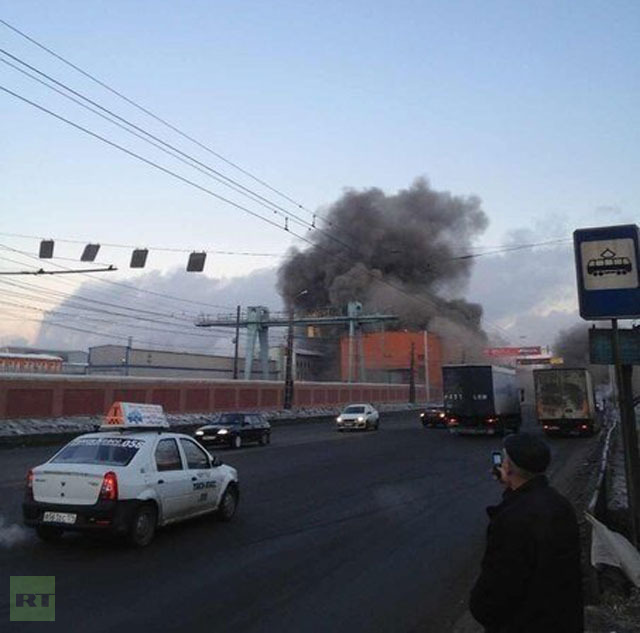
Another Tunguska event?
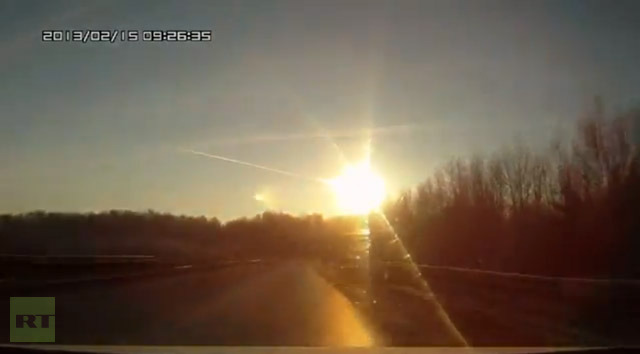
The incident in Chelyabinsk bears a strong resemblance to the 1908 Tunguska
event – an exceptionally powerful explosion in Siberia believed to have been
caused by a fragment of a comet or meteor.
According to estimates, the energy of the Tunguska blast may have been as high as 50 megatons of TNT, equal to a nuclear explosion. Some 80 million trees were leveled over a 2,000-square-kilometer area. The Tunguska blast remains one of the most mysterious events in history, prompting a wide array of hypotheses on its cause, including a black hole passing through Earth and the wreck of an alien spacecraft.
It is believed that if the Tunguska event had happened 4 hours later, due
to the rotation of the Earth it would have completely destroyed the city of
Vyborg and significantly damaged St. Petersburg.
When a similar, though less powerful, unexplained explosion happened in Brazil in 1930, it was named the ‘Brazilian Tunguska.’ The Tunguska event also prompted debate and research into preventing or mitigating asteroid impacts.
2-15-13 - ASTEROID DA 14 FLYING PAST EARTH TODAY:
| Asteroid |
Date(UT)
|
Miss Distance
|
Size
|
| 2013 BS45 |
Feb 12
|
4.9 LD
|
29 m
|
| 3752 Camillo |
Feb 12
|
57.5 LD
|
3.4 km
|
| 2013 BV15 |
Feb 13
|
3.7 LD
|
60 m
|
| 1999 YK5 |
Feb 15
|
49.1 LD
|
2.1 km
|
| 2012 DA14 |
Feb 15
|
0.09 LD
|
65 m
|
| 2013 CE82 |
Feb 17
|
4.6 LD
|
44 m
|
| 2013 CZ87 |
Feb 19
|
7 LD
|
28 m
|
| 2009 AV |
Feb 25
|
59.7 LD
|
1.0 km
|
| 2007 EO88 |
Mar 18
|
4.4 LD
|
23 m
|
| 1993 UC |
Mar 20
|
49 LD
|
3.8 km
|
| 1997 AP10 |
Mar 28
|
45.9 LD
|
1.8 km
|
| 2010 GM23 |
Apr 13
|
3.9 LD
|
50 m
|
| 2005 NZ6 |
Apr 29
|
24.9 LD
|
1.3 km
|
| 2001 DQ8 |
Apr 30
|
74.3 LD
|
1.1 km
|
Large Meteorite Explosion Over Cuba
Experts saying this is a hoax.
More news says this happened 6 years ago.
Cuba: Residents Report Large Meteorite Explosion Over Central Cuba, Houses Shaken
Source:
http://midnightwatcher.wordpress.com/2013/02/15/cuba-residents-report-large-meteorite-explosion-over-central-cuba-houses-shaken/
Meteor Blasts Russia
|
|
|
Meteor approaching impact at Chelyabinsk, Russia
|
A meteor blasted Chelyabinsk, Russia on February 15, 2013, following a magnetic storm that generated electrical ground currents and a 6.6 magnitude quake on February 14, 2013.
Earth’s magnetic field acts as a shield against spaceweather, which includes cosmic storms as well as asteroids and meteors. The planet is more susceptible to penetration by meteor and cosmic storms when the magnetic field is storming or weak.
The meteor struck northeast of Kyiv that was rocked with unexplained eery sounds in 2012 and the 3-4-5 triangle projected with the Sarvestan, Iran crop circle formed in June 2012. Sites are shown on the below map. A major quake spree followed on the heels of the crop circles, again pointing to electric-magnetic flux. Another crop circle next to the Baltic Sea in Latvia that formed June 17, 2012 is shown on the below map.
The Chelyabinsk meteor traveled from north to south across the Sun glyph in an active TimeStar window before impacting Russia. The TimeStar window remained open until February 18.
Electric-magnetic induction in high northern latitudes: http://www.allstarroundup.com/roundup/quakes/electric-magnetic.html
Sarvestan crop circle 3-4-5 triangle projection: http://www..allstarroundup.com/cc/ccsardinia-iran.html
Active TimeStar window at time of meteor strike: http://www.allstarroundup.com/domains/19sun.html
SO video: http://www.youtube.com/watch?v=Xy71kiWoGPs&feature=em-uploademail
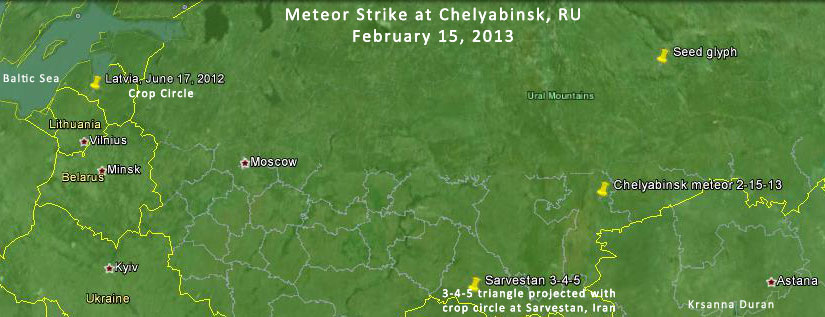
Electric-Magnetic Inductions
|
|
The magnetic upwelling in the New Siberian Islands that is attracting magnetic north appears to influence geophysical activity. Magnetic north is presently in the range of 147 West longitude in far northern ranges of the Arctic Circle, as it hikes to the New Siberia Islands. We do not yet have precise coordinates for new magnetic north, and must guesstimate until better observations are available. This is a preliminary observation of the planetary holon as it relates to the solar and galactic holon.
Spaceweather.com reported a magnetic storm on February 14, 2013. A 6.6 magnitude quake and a meteor impact, both in high northern latitudes of Russia, followed within hours of each other. The 6.6M was close to the line drawn between new magnetic north and Honshu, Japan with a 9.0M megaquake on March 11, 2011. The larger quake followed a 5.1M quake in North Korea two days after analysts believe a nuclear test was detonated. Nuclears wreak havoc on magnetic fields.
Spaceweather.com:
Magnetic Storm: "Valentine's Day in Scandinavia began with a magnetic storm. Rob Stammes of the Polar Light Center in Lofoten, Norway, reports: "Our instruments recorded 2o swings in the local magnetic field, which induced strong electrical currents in the ground outside our lab." The needles on his chart recorder were swinging wildly...
The storm was caused by a region of south-pointing magnetism in the solar wind that wafted past Earth during the early hours of Feb. 14th. The solar wind's south-pointing magnetic field partially canceled Earth's north-pointing magnetic field, opening a crack in our planet's magnetosphere. Solar wind poured in to fuel the storm."
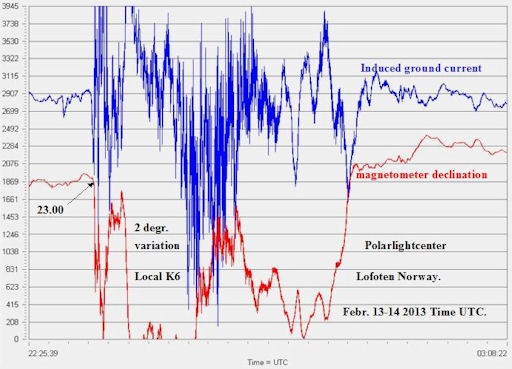 |
RUSSIAN METEOR INJURES HUNDREDS: This morning [February 15], a meteor exploded in the daytime skies above Chelyabinsk, Russia. According to CNN, hundreds of people were injured, mainly from the glass fragments of windows shattered by shock waves from the explosion. It is natural to wonder if this event has any connection to today's record-setting flyby of asteroid 2012 DA14. NASA has issued the following statement:
"The trajectory of the Russian meteorite was significantly different than the trajectory of the asteroid 2012 DA14, making it a completely unrelated object. Information is still being collected about the Russian meteorite and analysis is preliminary at this point. In videos of the meteor, it is seen to pass from left to right in front of the rising sun, which means it was traveling from north to south. Asteroid DA14's trajectory is in the opposite direction, from south to north."
Videos of the event may be found here and here. In many of the videos you can hear the sound of windows shattering as the meteor's loud shock wave reaches the ground. Onlookers cry out in Russian as alarms and sirens sound in the background. Stay tuned for updates!
ASTEROID FLYBY: At 2:25 p.m. EST (19:25 UTC) on Friday, Feb. 15th, asteroid 2012 DA14 will fly past Earth only 17,200 miles above our planet's surface. This will put it well inside the orbit of geosynchronous satellites, closer than any asteroid of the same size has come since regular sky surveys began in the 1990s. Researchers speculate that Earth's gravity might even cause seismic activity on the 50m-wide space rock. Click to view a computer simulation of the flyby, courtesy of NASA.
The shock wave from the meteor that exploded
above Siberia last week somehow sheared the roof off a
brick and steel factory building while leaving a nearby glass facade
unscathed. In some high-rises in this city, every window blew out on
the top floor; elsewhere, the windows on the ground floors suffered.
More ominously, reports came in to local news media over the weekend of stranger phenomena: behind unshattered apartment windows, glass jugs were said to explode into shards, dishes to crack, electronics to die. Balconies rattled.
One man said a bottle broke right in his
hand. One woman saw the flash, then heard explosions, then found the
windows of her enclosed balcony blown in; her neighbor, with
identical windows, escaped without property damage.
There seemed to be randomness in whose
property was damaged.
Scientists believe the space rock that
tore through the atmosphere on Friday morning and blew apart here
was the largest to have entered the atmosphere since 1908 and that
it was UNUSUAL as well FOR THE SCALE OF ITS EFFECTS: more than 1,200
people injured and broad property damage.
Indeed, the event is providing a first
indication of the type of structural and infrastructural costs
meteors can exact from a highly industrialized society. NASA
scientists say a meteor of this size strikes the Earth about once
every hundred years.
Shattered glass caused most of the damage
and injuries here in Chelyabinsk, a sprawling industrial city of
about a million people. What shattered the glass, scientists say,
was both the explosion as the meteor fragmented and the waves of
pressure created as it decelerated. Such low-frequency waves —
called infrasound — are sometimes detected by cold-war era nuclear
blast sensors in remote parts of the Pacific Ocean or Alaska.
The waves can bounce off buildings and be
stronger in some places than others; they can also resonate with
glass, explaining why bottles and dishes might have shattered inside
undamaged kitchens, as if crushed by the airy hand of the meteor
itself. “A shock wave is like a ball. Throw a ball into a room and
it will bounce from one wall to another.”
Russia has mobilized 24,000 emergency
officials to inspect roads, railroads, hospitals, factories and
military facilities. Most are undamaged, including 122 sites
identified as particularly critical, including nuclear power plants,
dams and chemical factories, and a space launching site called
Strela.
Also Sunday, Russia’s consumer safety
inspection agency, Rospotrebnadzor, released a statement saying the
water in Lake Chebarkul, where a hole in the ice appeared on Friday,
was not radioactive.
It was unclear why the agency released
this finding only Sunday, or whether the tests were conducted to
assuage popular concerns or out of any real official uncertainty
over what happened on Friday. In any case, the agency said a mobile
laboratory quietly dispatched to the lake tested for but did not
discover cesium 137 and strontium 90, isotopes created in nuclear
explosions.
Infrasound waves have not previously been
studied in a cityscape. But the apparent randomness of the damage
was consistent with the way such waves function.
“A shock wave can be coming from a
particular direction, and if you face that direction you are more
susceptible. One building might shadow another, or you may have a
street that is optimally aligned to channel the wave, either in a
fortunate or unfortunate way.”
An infrasound wave “is very efficient at
traveling long distances,” and “windows, structures or even glass
jars susceptible to resonate at this frequency could be a factor to
seemingly random damage at widely disparate locations.”
A similar, though smaller, explosion of a
meteor over the Pacific Ocean occurred on Oct. 8, 2009, which also
sent out low-frequency waves, though too remote to affect homes or
industry. They were, though, registered by a network of infrasound
sensors established to monitor compliance with the international ban
on nuclear tests. The spokesman for the governor of Chelyabinsk
region characterized the damage there as without a discernible
pattern.
“It is impossible to say more glass broke
in one part of the city or another. Glass broke everywhere.”
The roof of the zinc factory that
collapsed was reinforced with a lattice of steel beams and supported
by concrete joists that are now broken, jutting upward with mangled
re-bar protruding. Windows on a neighboring house blew in with such
force that the frames went with them. Yet a few yards away on
Sverdlovsky Street, the cosmos spared a seemingly vulnerable Hundai
dealership, a three-story cube sheathed in glass, with glistening
display models inside. Not a window broke.
